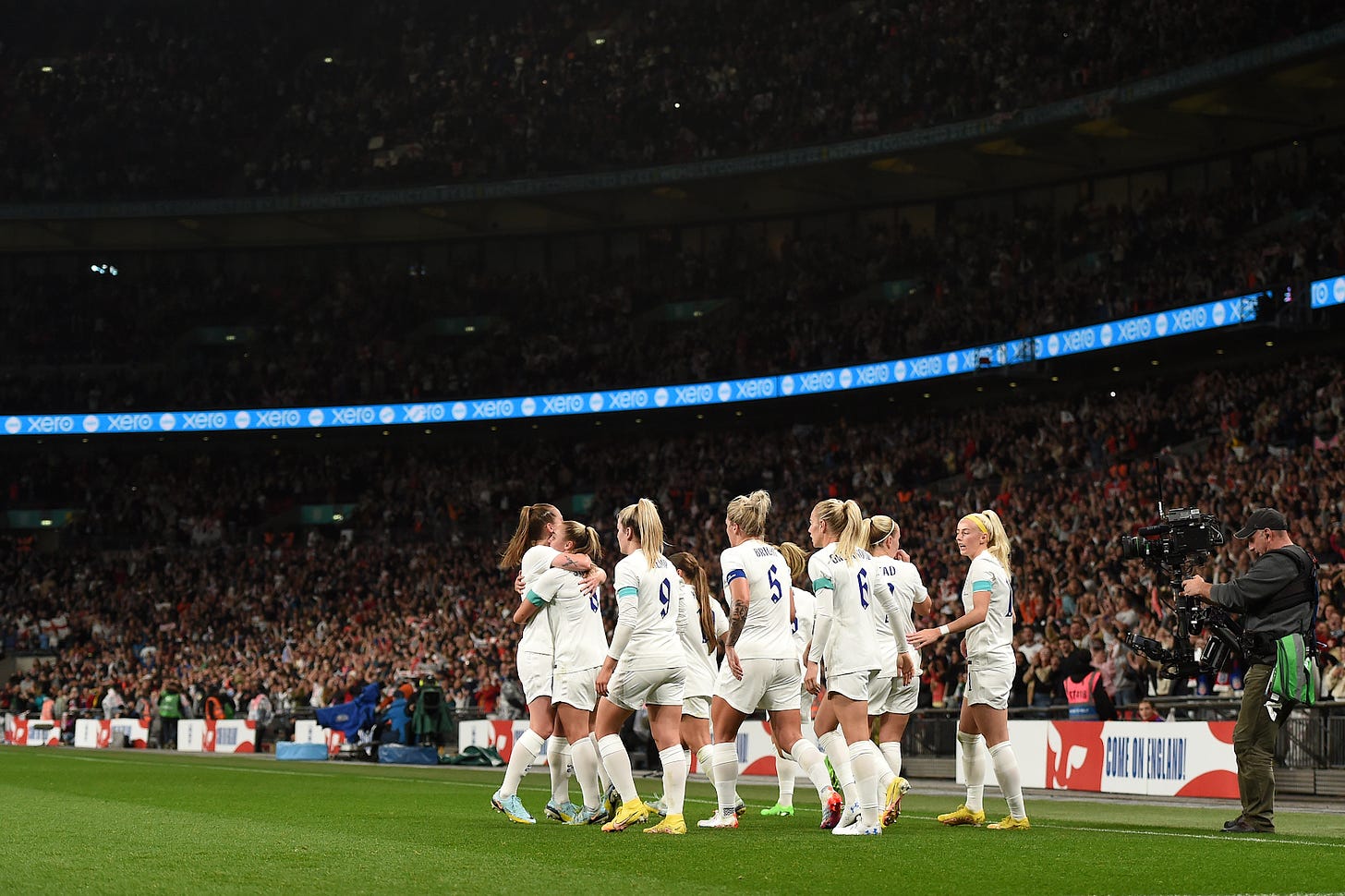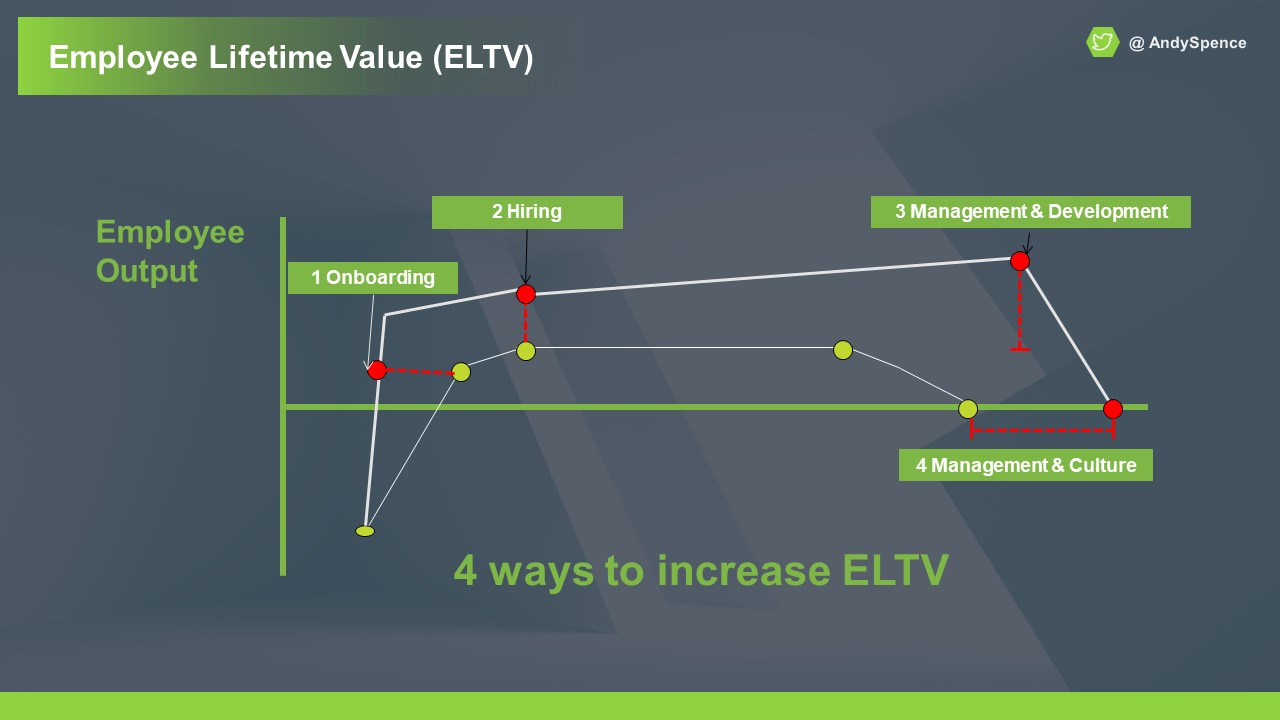From Lionesses to Flying Wingers: Revealing the New Heroes of The Beautiful Game
WF48 - Nine Lessons from How Football Coaches Use Technology and Data

“Playing football is very simple, but playing simple football is the hardest thing there is.” Johan Cruyff
As the Women’s World Cup Final takes centre stage in Sydney and the Premier League ignites passion, the beautiful game will yet again generate stories of heroes.
Football is a perfect blend of skill and chance. Sometimes fascinating, and often frustrating. Even if you can’t tell a football ⚽ from a Kangaroo 🦘there is plenty to learn from how managers use technology to win trophies 🏆.
1 -How The Lionesses Devour Data – Real-Time Performance Improvement
2 -Talent Scouting - Analysing Skill Ecosystems
3 - Extending Athletic Careers – Reducing Injuries and Improving Workforce Wellness
4 - Don’t Be Just Another Winger With Data – Empowering Self-Coaching
5 - Bad Systems 1 Good Players 0 – Maintaining Organisational Health
🍊Half-Time Break🍊
6 - The New Heroes of Football – Talent Spotters’ Algorithms
7 - David Vs Goliath – How to Beat the Odds In Your Industry
8 - Total Football - Changing the Rules of the Game
9 - ‘Need Not Apply’ – Removing Bias to Maximise Returns on Investment
Post-Match Analysis
This is an article of two halves, so make sure you subscribe to Workforce Futurist and you will receive the 2nd Half direct to your inbox next week.
From the football pitch to the workplace, I have whipped in a few crosses to the Executive Box that you might connect with…
1 - How The Lionesses Devour Data – Real-Time Performance Improvement
Most professional footballers wear a tracker-vest under their shirts. These trackers collect data during a game which along with video includes details of every pass made, tackle landed, shot taken and goal scored. The England Lionesses use this technology to have detailed reports on individual players from training sessions.
“Over the course of a tournament, these videos add a whopping 220,000 data points to the database” Paola Olivari - Director, Data and Analytics, Google Cloud.
Players can cover up to 13 kms during a game at different intensities, including sprints. Managers can track this data, plus heart-rates for an individual player.
The Lionesses also wear GPS trackers during training sessions, which generates another 1.3 million lines of squad data per session. This contributes insights into the volume and intensity of the games each footballer has participated in over the course of a season. Players are also expected to self-report their own wellness data, which results in the creation of an additional 20 or so data points per player each day.
Gathering these benchmarks helps the players and coaches understand changes and risks for injuries and peak performance levels.
Employer Scoring Opportunity - the Quantified Worker
“the winners will not be those who enable the technology, but those who construct a new contract with employees.”
Employers are increasingly using workforce tracking devices. In retail, from video surveillance and smartphone signals to cameras in delivery vans. You can read more about the opportunities and some of the perils of using this technology in the Quantified Worker.
Just as players' performance data informs decisions on the field, workforce data can drive informed decision-making for optimising employee performance and well-being. Organizational Network Analysis is being used to increase team collaboration, prevent burnout and identify informal leaders.
Coaching Video
At Southampton FC, First Team Data Scientist Dr Laura Bowen explains how the players' performance is tracked during training in this video.
2 - Talent Scouting - Analysing Skill Ecosystems
The Premier League is the most-watched sports league in the world. It is streamed to an estimated 643 million homes, which is a potential TV audience of 4.7 billion people. With such high stakes, there is a thriving industry around identifying players – the latest transfer this week was Moisés Caicedo to Chelsea for an eye-watering, £115m ($146m).
Lionel Messi has captained his country to win the World Cup, won a record seven Ballon d’Or awards, and 34 trophies with Barcelona.
He is regarded as the Greatest Player of All Time 🐐 – but how do we know?
Here is a deep-dive player analysis short video on Lionel Messi from Soccerment.
It gives his season stats, spider-charts with percentile rank compared to other players in the league. It shows his open play expected assists, expected threat from passes, completed passes per 100 touches, heat-map analysis of positions.
I share this video not to make any claims about Messi that we didn’t already know, but to illustrate how data is used in the ultimate performance sport.
For those who manage less famous workers, in the world of recruitment, we are left with LinkedIn. Career profiles with unverified claims “Led a team of 30 to world-leading success” is harder to prove than a footballer scoring 20 goals a season in La Liga.
Talent Scout Tip
In recruitment we fill one vacancy with one person. All of our 20th century management processes are geared up towards the individual, yet we all know that the magic happens in team. Even Messi can’t win the World Cup single-handedly, he did need a bit of help from the squad.
A question for hirers is, How will the new recruit fit into the existing team?
This question is hardly every analysed in organisations. See for example the analysis in this video on the most expensive defender in the world and a view on how he will integrate into the existing team.
Further Reading
In 2023, for every flourishing organisation, there is a HR function with a People Analytics function. Not every employer can hire a PhD in Behavioural Science to the team, but there is still lots to learn from how organisations use data to make better workforce decisions.
Here are two great sources of information on all things People Analytics :
David Green’s Monthly 20 Best Articles on People Analytics - here is the July 2023 edition.
Directionally Correct, The #1 People Analytics Substack, from Scott Hines and Cole Napper.
3 - Extending Athletic Careers – Reducing Injuries and Improving Workforce Wellness
Messi makes it on to this Age and Performance chart as an outlier.
One reason he has achieved so much in football, is by keeping fit for longer.
Research shows that football players’ injuries can often be predicted by looking at the players’ workloads during training and competition.
Milan Lab was founded in 2002 to reduce the risk of AC Milan players getting injured.
When they won the Champions League in 2007, for instance, the team’s average age was well above 30 and captain Paolo Maldini was approaching 40 years of age.
The aim was to help injured players recover faster, and improve training performance and seems to be successful at extending players’ careers.
Employer Tip To Extend Productivity
For specific types of workers, see if you can calculate the Employee Lifetime Value (ELTV) by measuring output over time. The outputs might not be goals, but might for example be sales. It can help focus your workforce tactics on getting productive more quickly, increasing productivity, or extending tenure.
Further Reading
Here are some suggestions and tips on improving wellbeing in the Workforce, and preventing burnout.
4 - Don’t Be Just Another Winger With Data – Show People How to Analyse their Data to Improve Their Performance
"I am conscious of shifting the opponent's centre of gravity. If I can move the opponent's body, I win," Kaoru Mitoma
The Brighton and Hove Albion player, Kaoru Mitoma, is one of the most improved in the Premier League with 16 assists and goals last season. The Japanese winger has written a thesis on ‘the art of dribbling’ at the University of Tsukuba. Part of this involved strapping cameras to his team mates’ heads to observe their reactions and field of vision when an attaching player received the ball. The Quantified-Self movement is not new, and can be a powerful approach for some individuals with support from employers.
Coaching Tip
Not every employee will have Mitoma’s ability to study, and develop skills to this level. Employers who invest in their data analytics capability also need to invest in coaching people how to use the data effectively to avoid a dribbling mess.
Further Reading
Data is easy to find, but the trick is to make better decisions. Whether this is in real-time in a game, or over the longer-term. There are some pointers here on making better organisational decisions, asking big questions, avoiding cognitive bias, and enabling smarter teams.
5 - Bad Systems 1 Good Players 0 – Maintaining Organisational Health
“A bad team will beat a good player every time”
AN Football Manager (with a hat-tip to W. Edwards Deming)
Talent spotting doesn’t always work for football stars or hiring mere mortals.
There are too many stories of transfers with mega expectations flopping after the big money club transfer. Before we get too excited about our predictive models, we need to get back to a familiar subject that every leader will have come across.
“Apparently we hired the best person, with great interviews, and references. BUT they left after 6 months – it just didn’t work out here.“
You can’t just put a great player in a bad system and expect it to work out.
You will have your favourite sporting, corporate, and academic examples.
But overall organisational health is key for a team to be successful.
CONTINUE READING THE 2ND HALF OF THE ARTICLE HERE →
Defying the Odds With Unconventional Strategies and Smarter Talent Scouting
The Women’s World Cup Final 🏆 ushered in a new era of heroes, villains, and inspiring stories. Among the captivating displays on the pitch, countless equally remarkable performances unfolded behind the scenes, forever hidden from our view. Today, I delve further into football coaching and its valu…
Make sure you subscribe to Workforce Futurist to receive further updates direct to your inbox.










Wow! Great use of tech, sports, and science!